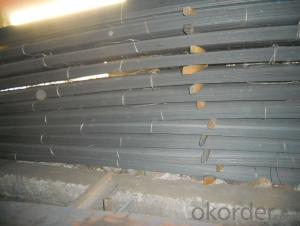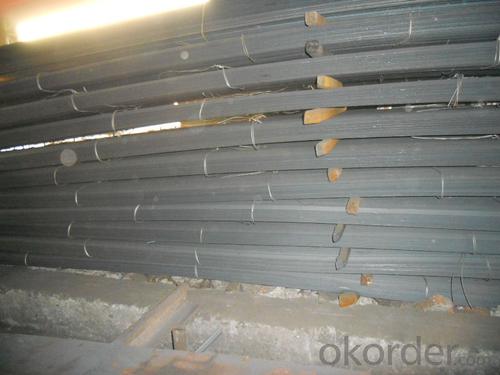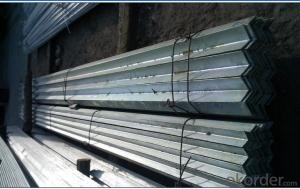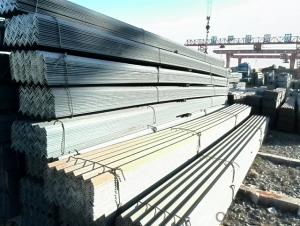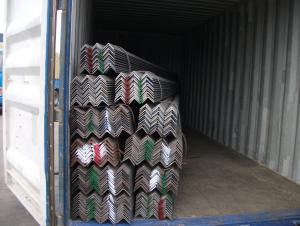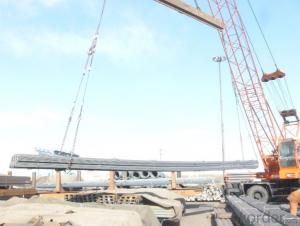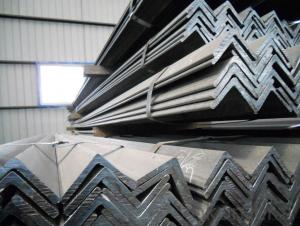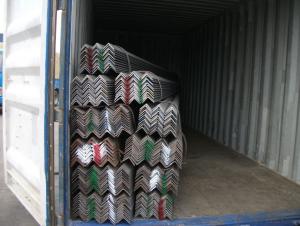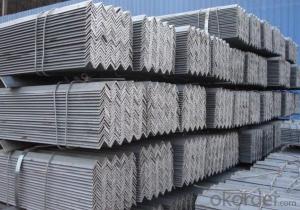Hot Rolled Equal Angle Steel with High Quality
- Loading Port:
- Tianjin
- Payment Terms:
- TT or LC
- Min Order Qty:
- 20 m.t.
- Supply Capability:
- 1000 m.t./month
OKorder Service Pledge
OKorder Financial Service
You Might Also Like
Product Description:
OKorder is offering Hot Rolled Carbon Steel Equal Angle at great prices with worldwide shipping. Our supplier is a world-class manufacturer of steel, with our products utilized the world over. OKorder annually supplies products to European, North American and Asian markets. We provide quotations within 24 hours of receiving an inquiry and guarantee competitive prices.
Product Applications:
According to the needs of different structures, Angle can compose to different force support component, and also can be the connections between components. It is widely used in various building structures and engineering structures such as roof beams, bridges, transmission towers, hoisting machinery and transport machinery, ships, industrial furnaces, reaction tower, container frame and warehouse etc.
Product Advantages:
OKorder's Equal Angle are durable, strong, and resist corrosion.
Main Product Features:
· Premium quality
· Prompt delivery & seaworthy packing (30 days after receiving deposit)
· Corrosion resistance
· Can be recycled and reused
· Mill test certification
· Professional Service
· Competitive pricing
Product Specifications:
1. Invoicing on theoretical weight or actual weight as customer request
2. Length: 6m, 9m, 12m as following table
3. Sizes

Sizes: 25mm-250mm | ||
a*t | ||
25*2.5-4.0 | 70*6.0-9.0 | 130*9.0-15 |
30*2.5-6.6 | 75*6.0-9.0 | 140*10-14 |
36*3.0-5.0 | 80*5.0-10 | 150*10-20 |
38*2.3-6.0 | 90*7.0-10 | 160*10-16 |
40*3.0-5.0 | 100*6.0-12 | 175*12-15 |
45*4.0-6.0 | 110*8.0-10 | 180*12-18 |
50*4.0-6.0 | 120*6.0-15 | 200*14-25 |
60*4.0-8.0 | 125*8.0-14 | 250*25 |
4. Payment terms:
1).100% irrevocable L/C at sight.
2).30% T/T prepaid and the balance against the copy of B/L.
3).30% T/T prepaid and the balance against L/C
5.Material details:
Alloy No | Grade | Element (%) | |||||
C | Mn | S | P | Si | |||
Q235 | B | 0.12—0.20 | 0.3—0.7 | ≤0.045 | ≤0.045 | ≤0.3 | |
Alloy No | Grade | Yielding strength point( Mpa) | |||||
Thickness (mm) | |||||||
≤16 | >16--40 | >40--60 | >60--100 | ||||
≥ | |||||||
Q235 | B | 235 | 225 | 215 | 205 | ||
Alloy No | Grade | Tensile strength (Mpa) | Elongation after fracture (%) | ||||
Thickness (mm) | |||||||
≤16 | >16--40 | >40--60 | >60--100 | ||||
≥ | |||||||
Q235 | B | 375--500 | 26 | 25 | 24 | 23 | |
FAQ:
Q1: Why buy Materials & Equipment from OKorder.com?
A1: All products offered byOKorder.com are carefully selected from China's most reliable manufacturing enterprises. Through its ISO certifications, OKorder.com adheres to the highest standards and a commitment to supply chain safety and customer satisfaction.
Q2: How do we guarantee the quality of our products?
A2: We have established an advanced quality management system which conducts strict quality tests at every step, from raw materials to the final product. At the same time, we provide extensive follow-up service assurances as required.
Q3: How soon can we receive the product after purchase?
A3: Within three days of placing an order, we will begin production. The specific shipping date is dependent upon international and government factors, but is typically 7 to 10 workdays.
Q4: What makes stainless steel stainless?
A4: Stainless steel must contain at least 10.5 % chromium. It is this element that reacts with the oxygen in the air to form a complex chrome-oxide surface layer that is invisible but strong enough to prevent further oxygen from "staining" (rusting) the surface. Higher levels of chromium and the addition of other alloying elements such as nickel and molybdenum enhance this surface layer and improve the corrosion resistance of the stainless material.
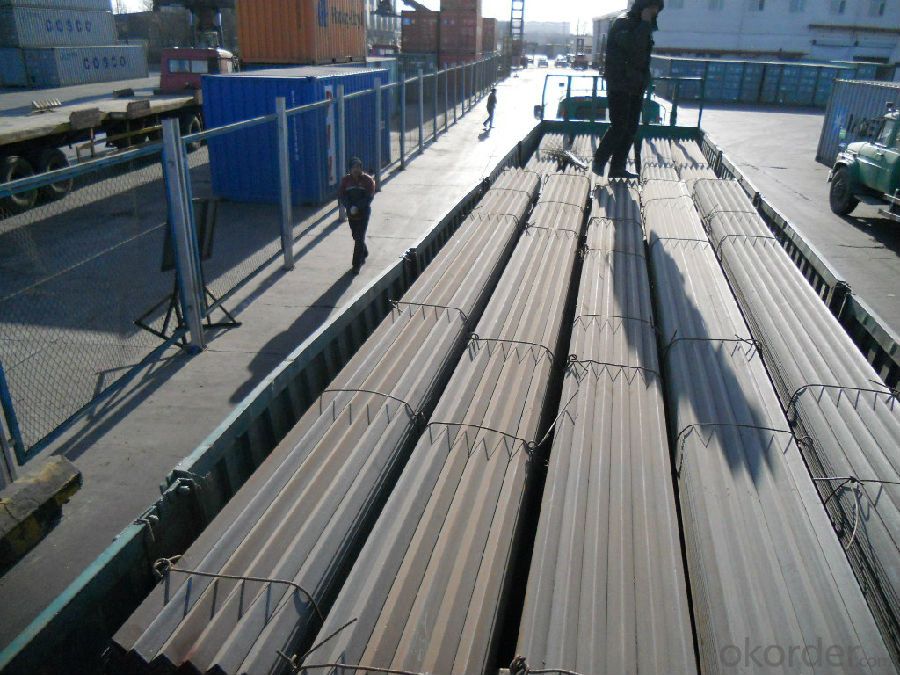

- Q: Can steel angles be used in the construction of agricultural buildings?
- Yes, steel angles can definitely be used in the construction of agricultural buildings. Steel angles are a versatile and durable building material that offer several advantages when it comes to constructing agricultural structures. Firstly, steel angles provide excellent structural support and stability. They can be used to create sturdy frameworks for the walls, roofs, and other structural components of agricultural buildings. This is particularly important in agricultural buildings, where heavy machinery and equipment is often stored, and where the structures need to withstand harsh weather conditions and potential impact from animals or other elements. Secondly, steel angles are highly resistant to corrosion and rust, which makes them ideal for agricultural buildings that are exposed to moisture, chemicals, and other potentially corrosive substances. This resistance to corrosion ensures that the structure remains strong and durable over time, reducing the need for frequent maintenance and repairs. Furthermore, steel angles are available in various sizes and shapes, allowing for flexibility in design and construction. They can be easily customized and cut to fit specific building requirements, making them adaptable to various agricultural building designs. Additionally, steel angles can be easily welded or bolted together, making the construction process more efficient and cost-effective. Lastly, steel angles are a sustainable and environmentally friendly choice for agricultural buildings. Steel is a recyclable material, meaning that it can be reused or repurposed once the building has reached the end of its lifespan. This reduces the environmental impact and promotes sustainability in the construction industry. In conclusion, steel angles can be effectively used in the construction of agricultural buildings due to their structural strength, corrosion resistance, design flexibility, and sustainability.
- Q: What are the different grades of steel used in manufacturing steel angles?
- There are several different grades of steel that are commonly used in manufacturing steel angles. These grades vary in terms of their composition, strength, and other properties, and are selected based on the specific requirements of the application. One commonly used grade is mild steel, also known as low carbon steel or A36 steel. This grade is widely available and commonly used due to its affordability and ease of machining. Mild steel angles are often used in general construction and fabrication projects. Another grade is high-strength low-alloy steel (HSLA), which contains small amounts of alloying elements such as copper, phosphorus, niobium, or vanadium. HSLA steels offer higher strength and improved corrosion resistance compared to mild steel, making them suitable for structural applications in heavy machinery or marine environments. There are also higher-strength steels, such as high-strength steel angles (HSS) or ultra-high-strength steel angles (UHSS). These grades are specifically designed to provide exceptional strength and durability, often used in demanding applications such as bridges, high-rise buildings, or automotive components. Stainless steel is another common grade used in manufacturing steel angles. With its excellent corrosion resistance, stainless steel angles are commonly used in food processing, chemical, or marine applications where resistance to rust and staining is crucial. The specific grade of steel used in manufacturing steel angles depends on factors such as load-bearing requirements, corrosion resistance, and cost considerations. Consulting with a structural engineer or steel supplier can help determine the most suitable grade for a particular application.
- Q: What is the maximum length of a steel angle that can be transported?
- The maximum length of a steel angle that can be transported depends on various factors such as the transportation method, the size and weight restrictions of the vehicle used, and any legal limitations imposed by local regulations. However, in general, steel angles are commonly transported in lengths ranging from 20 to 40 feet, which are standard sizes for shipping containers and flatbed trucks.
- Q: How do you protect steel angles during transportation?
- To protect steel angles during transportation, it is important to use proper packaging and secure them tightly to prevent any movement or shifting. This can be achieved by using sturdy crates or pallets, wrapping them in protective materials such as foam or bubble wrap, and using straps or bands to secure them in place. Additionally, ensuring that the angles are properly cushioned and avoiding contact with other sharp or abrasive materials will help prevent any damage or scratches.
- Q: Are steel angles suitable for earthquake-resistant structures?
- Steel angles are commonly used in earthquake-resistant structures due to their high strength and ductility properties. The angular shape of these structural members allows them to effectively resist lateral forces caused by seismic events. The ability of steel angles to absorb and dissipate energy during an earthquake makes them suitable for withstanding the dynamic loads generated by ground motions. Additionally, steel angles can be easily connected and joined together, providing a high level of structural integrity and ensuring the overall stability of the building. These factors make steel angles a favorable choice for earthquake-resistant structures, as they offer a reliable and durable solution for mitigating the impact of seismic events.
- Q: What are the limitations of using steel angles in corrosive or saltwater environments?
- The use of steel angles in corrosive or saltwater environments is limited due to their susceptibility to corrosion. Steel is primarily composed of iron, which can react with oxygen and water to form iron oxide, commonly known as rust. In the presence of corrosive substances or saltwater, this corrosion process is accelerated. One limitation is the potential for accelerated corrosion in these environments. Corrosion weakens the structural integrity of the steel angles, which can compromise the overall stability and safety of any structure they are used in. This can be particularly concerning in applications where the steel angles are load-bearing or subjected to significant stress. Another limitation is the decrease in the lifespan of steel angles in corrosive or saltwater environments. The ongoing corrosion process can significantly reduce the lifespan of the steel angles, leading to more frequent maintenance or replacement requirements. This can result in higher costs and potential disruptions to operations or projects. Furthermore, the appearance of the steel angles can be negatively affected by corrosion in corrosive or saltwater environments. Rust stains can develop on the surface of the steel, which can be aesthetically unappealing, especially in applications where the steel angles are visible. To overcome these limitations, alternative materials can be considered for corrosive or saltwater environments. Stainless steel, for example, contains a high proportion of chromium, which provides it with enhanced corrosion resistance. Additionally, protective coatings or treatments, such as galvanizing or epoxy coatings, can be applied to steel angles to provide an additional barrier against corrosion. Overall, while steel angles are versatile and widely used in various applications, their use in corrosive or saltwater environments is limited due to their susceptibility to corrosion. It is crucial to carefully evaluate the specific environment and consider alternative materials or protective measures to ensure the longevity and integrity of any structure or project.
- Q: What are the different types of connections used for steel angles in architectural applications?
- There are several types of connections used for steel angles in architectural applications. Some common types include bolted connections, welded connections, and riveted connections. Bolted connections involve using bolts to secure the steel angles together, while welded connections involve fusing the steel angles using heat. Riveted connections, on the other hand, involve using rivets to connect the steel angles together. Each type of connection has its own advantages and disadvantages, and the choice depends on factors such as the load requirements, aesthetics, and ease of construction.
- Q: What are the different standards and specifications for steel angles?
- There are several different standards and specifications for steel angles, which determine the physical and mechanical properties of the angles. Some of the most commonly used standards include: 1. ASTM A36/A36M: This is a standard specification for carbon structural steel, including angles. It specifies the chemical composition, mechanical properties, and other requirements for carbon steel angles. 2. ASTM A529/A529M: This specification covers high-strength carbon-manganese steel shapes, including angles. It outlines the composition, mechanical properties, and other specifications for these angles. 3. ASTM A572/A572M: This standard specification covers high-strength low-alloy columbium-vanadium structural steel shapes, including angles. It provides details on the chemical composition, mechanical properties, and other requirements for these angles. 4. ASTM A588/A588M: This specification covers high-strength low-alloy structural steel shapes, including angles, with improved atmospheric corrosion resistance. It specifies the chemical composition, mechanical properties, and other characteristics for these angles. 5. ASTM A709/A709M: This standard specification covers carbon and high-strength low-alloy structural steel shapes, including angles, for use in bridges. It provides information on the chemical composition, mechanical properties, and other specifications for these angles. 6. EN 10056: This European standard specifies the tolerances on shape, dimensions, and mass of hot-rolled structural steel equal and unequal angles. It also provides information on the mechanical properties and other requirements for these angles. 7. JIS G3192: This Japanese standard specifies the dimensions, mass, and permissible variations of hot-rolled steel sections, including angles. It outlines the mechanical properties and other specifications for these angles. These are just a few examples of the different standards and specifications for steel angles. It is important to consult the specific standard relevant to your project or application to ensure that the steel angles meet the required criteria.
- Q: Can steel angles be used in the construction of schools?
- Yes, steel angles can be used in the construction of schools. Steel angles are versatile structural elements that can be used to create strong and durable frameworks for various construction projects, including schools. They are commonly used in the construction industry for their high strength-to-weight ratio, which makes them ideal for supporting heavy loads and providing structural stability. Steel angles can be incorporated into the design of school buildings to reinforce walls, support staircases, create open spaces, or serve as structural components for roofs and ceilings.
- Q: How do you calculate the torsional capacity of a steel angle?
- In order to determine the torsional capacity of a steel angle, one must take into account both the material properties and dimensions of the angle. The torsional capacity refers to the maximum torque or twisting force that the angle can withstand without experiencing significant deformation or failure. To calculate the torsional capacity, the following steps can be followed: 1. Measure the dimensions of the steel angle, including thickness, width, and length, in order to determine the cross-sectional properties. These properties include the area moment of inertia (I) and the polar moment of inertia (J). These values provide information about the angle's resistance to torsional forces. 2. Obtain the material properties of the steel angle, such as the yield strength (σy) and the ultimate strength (σu). These values indicate the maximum stress that the material can withstand before permanent deformation or failure occurs. 3. Calculate the torsional stress on the angle by using the applied torque (T). The torsional stress (τ) is determined by dividing the torque by the polar moment of inertia (τ = T / J). This calculation reveals the amount of twisting force experienced by the angle. 4. Determine the safety factor by dividing the yield strength of the material by the calculated torsional stress (SF = σy / τ). The safety factor represents the ratio of the maximum stress that the angle can withstand (yield strength) to the actual stress it experiences. A higher safety factor indicates a greater margin of safety. 5. Compare the calculated safety factor to a desired value. Depending on the specific application and design requirements, a minimum safety factor may be specified. If the calculated safety factor is below the desired value, it suggests that the angle is not suitable for the intended torsional load, and alternative angles or design modifications may be necessary. It should be noted that these calculations offer an estimate of the torsional capacity, and other factors such as the presence of holes, welds, or other geometric irregularities can impact the actual torsional behavior of the angle. Therefore, it is advisable to consult relevant design codes or professional engineering resources for detailed calculations and recommendations specific to the intended application.
Send your message to us
Hot Rolled Equal Angle Steel with High Quality
- Loading Port:
- Tianjin
- Payment Terms:
- TT or LC
- Min Order Qty:
- 20 m.t.
- Supply Capability:
- 1000 m.t./month
OKorder Service Pledge
OKorder Financial Service
Similar products
Hot products
Hot Searches
Related keywords
